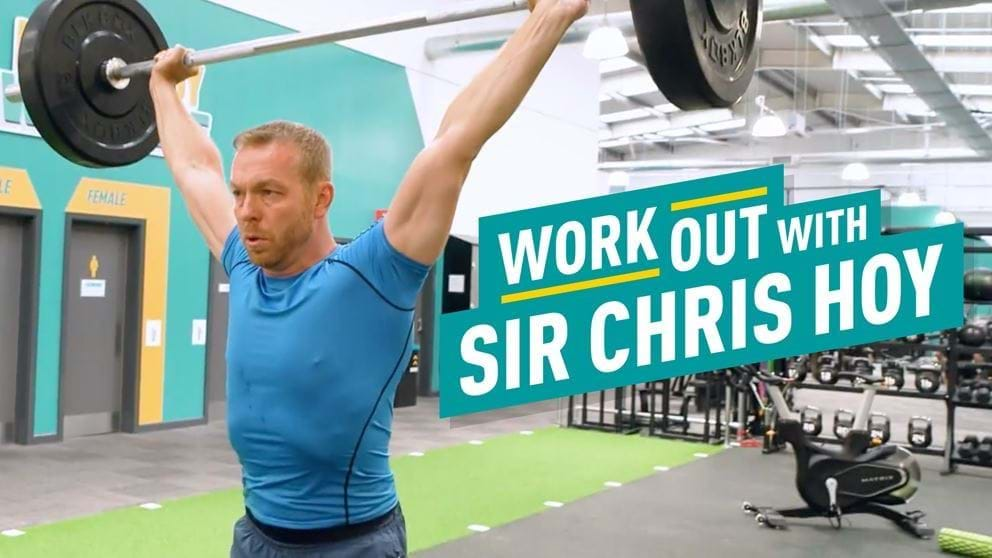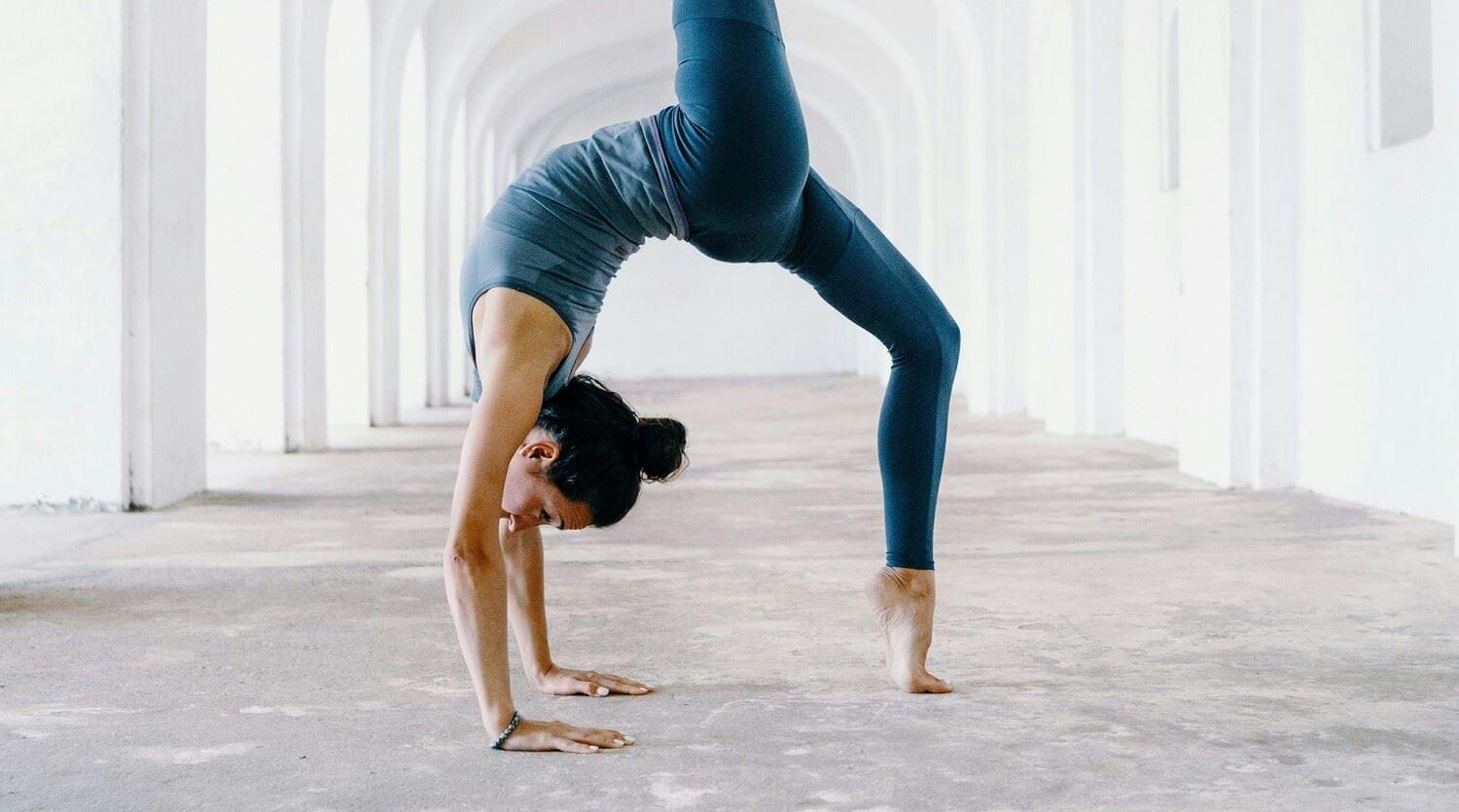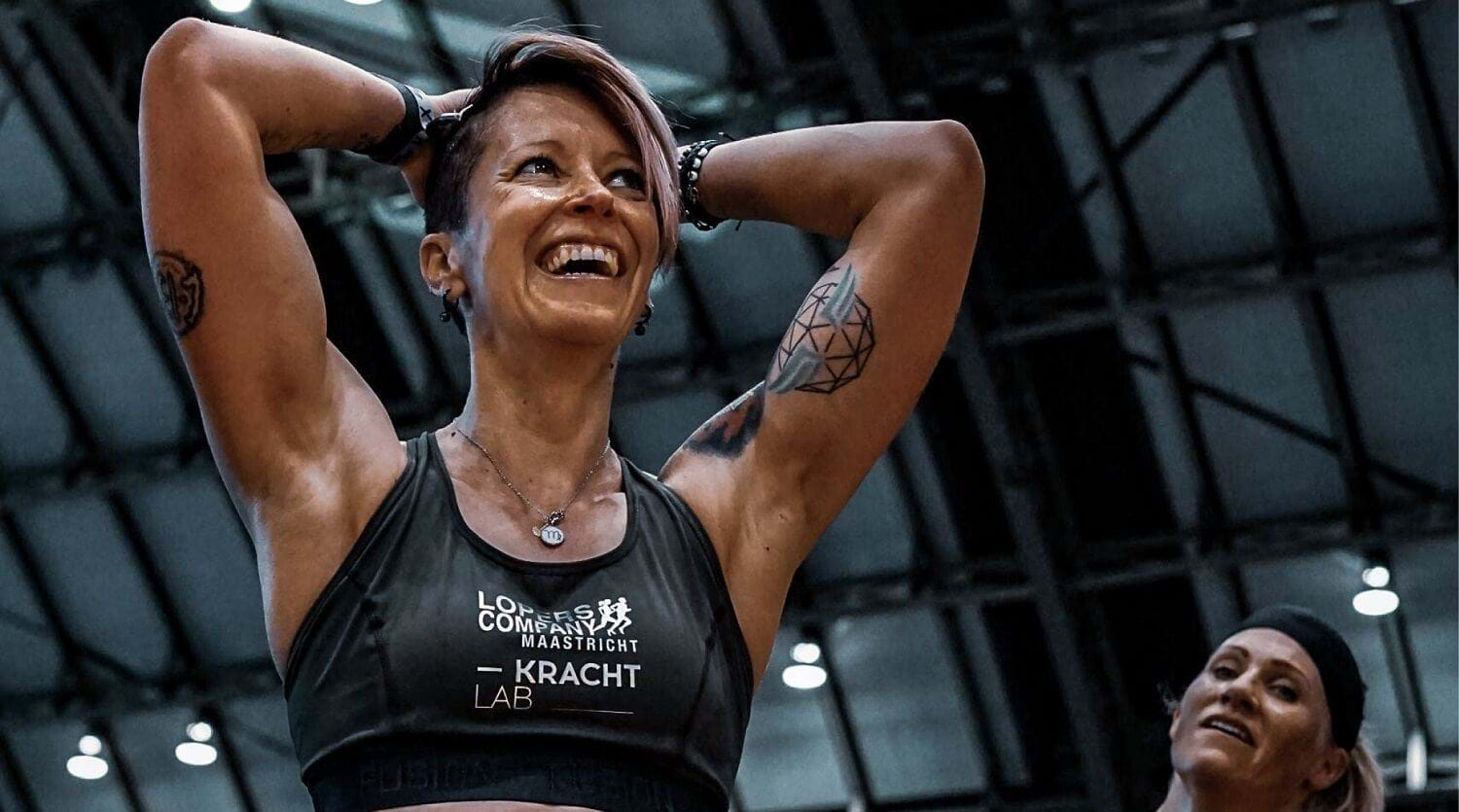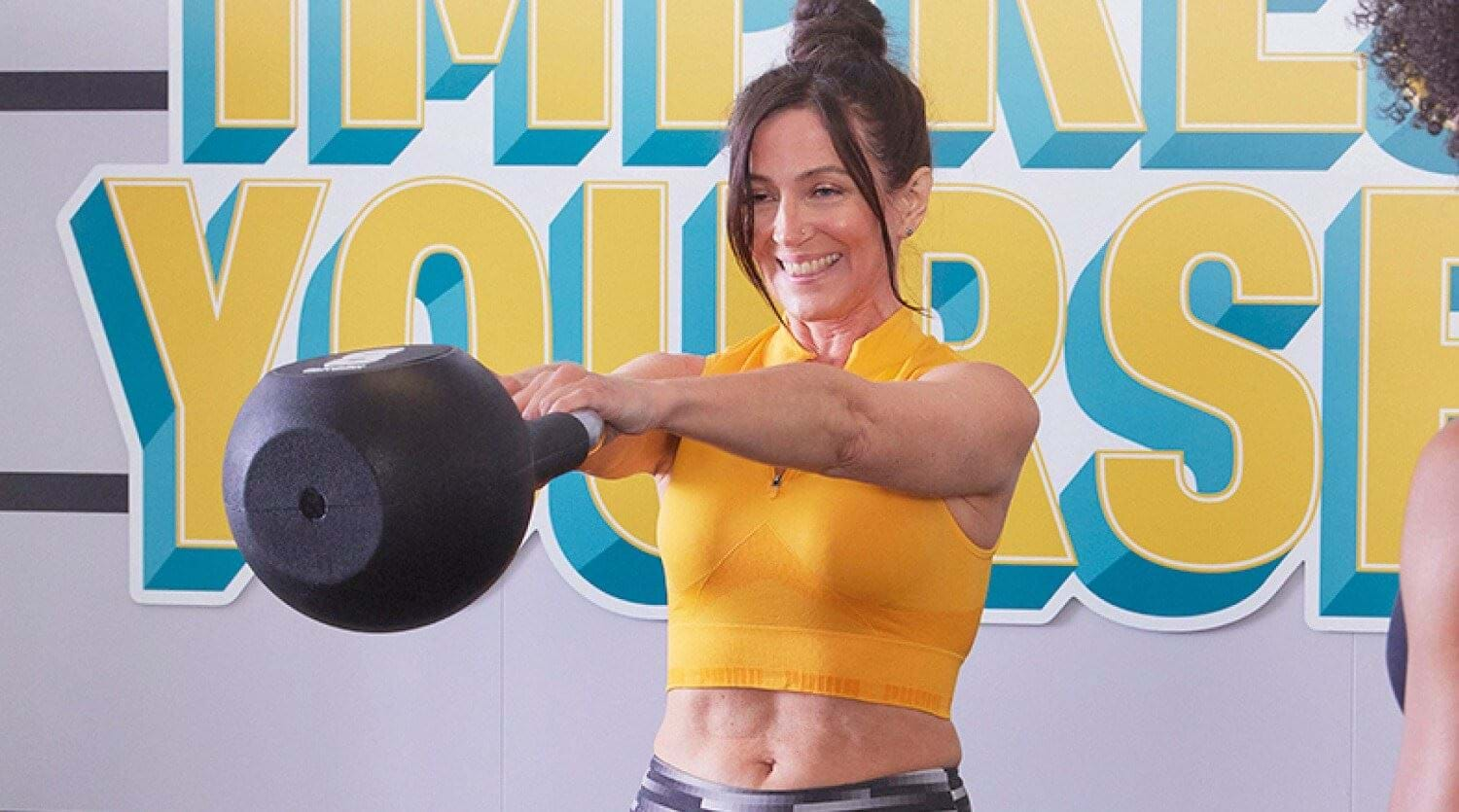Workout With Sir Chris Hoy

6 x Olympic Champion. Cycling Legend. Introducing Sir Chris Hoy.
Up until the Tokyo Olympic Games, Chris was the most successful Olympic Cyclist in history with 6 gold medal wins and was awarded a knighthood in 2009 for his incredible contributions to the sporting world.
Chris credits some of the insane strength and power he had in the velodrome to the leg workouts he did in the gym. And we caught up with him during a leg day session to find out more.
Get the inside scoop on how Chris trains, what fuels his sessions and his top tips for getting the most out of your workouts in the gym.
45 minutes. 5 exercises. One jam-packed leg day workout. Let's go!
Warm-Up
We join Chris for 5 minutes of gentle pedalling on the static bike as he warms up ahead of his leg workout.
"The whole point of this is to warm the body up, get the heart rate slightly elevated, loosen off the muscles, get the blood pumping and prepare yourself for the first part which will be some mobility and stretching before we start lifting some weights".
Foam Rolling
Chris then grabs a foam roller and heads over to do some self-myofascial release. Foam rolling can help to relieve muscle tightness and improve flexibility, so it's great to prime your muscles ahead of the leg workout.
"If you think about your muscles like an elastic band, if you try and stretch it cold the stretchy part of that band will move first, not the tight part. So, this is what you use to get into the tight parts to loosen them up and then the whole muscle will stretch as one -- or as close as possible. And then that will really help you when you start your heavy lifting"
Here are some great foam rolling exercises to help prepare you for the workout:
Quad Stretch: Position yourself over the foam roller in a plank position. Work on one quad at a time, putting your weight onto the foam roller and slowly rocking backwards and forwards moving it up and down your quad muscle. Remember to pause and hold on any tight spots until the tension releases a little.
Hamstring Stretch: Sit with your legs on top of the foam roller, with it positioned just above the back of your knee. Place your hands on the ground behind to support you as you slowly roll backwards and forwards moving the foam roller up towards your glutes and back down. To add more pressure, elevate one leg and just roll one hamstring at a time.
IT Band Stretch: Lie on your side in a side plank position with the foam roller under the side of one of your legs. Roll yourself up and down from just above your knee, all the way up towards your hip and repeat. Remember to hold on any tight spots until the tension releases.
Calf Stretch: Sit with your legs on top of the foam roller, with it positioned underneath your calves. Place your hands behind you to support your weight and cross your left leg over your right to focus on rolling just one calf at once. Slowly roll back and forth up and down your calf before switching to the other side.
Stretches
It's then time to stretch! Chris incorporates stretching and mobility work into his warm-ups as he explains that before leg day it's important to open up the hips to get yourself ready for lifting in a deep flexed position.
Deep Squat Stretch: This stretch puts tension on the inside of your thigh and your glutes to gently open up your hips, preparing your body for the workout ahead and helping you to have a better range of movement in any squat exercises.
Banded Hip Flexor Stretch: Adding resistance bands creates an assisted stretch, which is a great way to add extra tension and range to your stretch routine. For this stretch, you want to loop the band around a sturdy anchor. Chris is using one of our rigs, but you can use anything strong and stable which can counter the weight you will put through it. Gently ease into the stretch, feeling the tension in your pelvis which helps to stretch your hip flexors out - before repeating on the other side.
Banded Hip Rotations: This is another great assisted stretch to open up your hips, squeezing your glutes and moving your hips through external to internal rotation.
Leg Swings: Leg swings are a great dynamic movement that helps to release tension and tightness in your hamstrings, and warm them up ready for the workout ahead. Remember to repeat the stretch on both sides!
Walking Lunges: Finish off with bodyweight walking lunges, waking up your muscles and working through a movement pattern which you'll be doing during the workout. Squeezing your glutes and quads as you go.
Hold each stretch for 10 -- 20 seconds, and then remember to repeat any unilateral stretches on both sides!
Overhead Squat: 8 - 10 reps x 4 sets
Chris kicks off his leg day workout in the rack with an overhead squat, which he explains is great for working on your technique in the classic barbell squat, and great for general core strength and stability.
"We used to use this exercise to improve our shoulder stability. It's really good for the backs of your shoulders and your neck. We used to get a lot of pain with that because you'd be in a tucked position on the bike. So, this is a good way of working on that strength and stability in your shoulder, but also get that really straight spine to be able to get into a deep squat position."
Chris' Top Tips for the Overhead Squat:
- Use a mirror to check your form or film yourself so you can watch back and make tweaks and improvements.
- Aim to be as symmetrical as possible when doing the overhead squat.
- Start light and prioritise form over adding too much weight.
Barbell Squats: 8 -- 10 reps x 4 sets
Next up we have as Chris likes to call it 'the king of all exercises' the barbell squat. Chris explains how he always starts with a warm-up set with just the bar, before moving onto his four working sets which he gradually builds up to the heaviest weight.
"If you can only do one exercise, this is the one you want to do. All the Gold medals have been built in the squat rack without a doubt, I probably spent way more time on a platform, in the rack than anywhere else in the gym"
Chris' Top Tips for the Barbell Squat:
- Use a light weight and build up gradually to your working weight.
- Drive your hips and shoulders up as one when coming out of the squat. Avoid buckling forward under the weight.
- Ask a personal trainer or the 'squat expert' in your gym for help with your form. How the squat looks varies person to person depending on your anatomy and flexibility, so it's helpful to make sure your form is right for you.
Romanian Deadlifts: 10 -- 12 reps x 4 sets
Now it's time to work your posterior chain with one of Chris' go to hamstring and glute exercises -- the Romanian deadlift. This exercise is great for putting tension through your hamstrings in a stretched state and firing up your glutes too.
Chris explains that the Romanian deadlift is a hip hinge movement pattern rather than a classic knees bend drive up classic deadlift movement. The bar path should only come down to just below your knees (depending on your flexibility) versus all the way down to the floor.
"Throughout the exercise try to suck in your Transverse abdominis (also known as your TVA) as it's really good for your core stability. Keep your pelvis set and everything comes from the glutes and the hamstrings. Imagine there is a hinge - it's not a knees up and down, it's pivoting from your hip."
Chris' Top Tips for the Romanian Deadlift:
- Slow down the tempo of your reps to make sure you feel a full stretch in your hamstring.
- Squeeze your glutes and your hamstrings for the power behind the exercise, not pulling from your lower back.
- Keep the weight light and focus on form throughout.
Barbell Lunges: 10 -- 12 reps x 4 sets
Next up Chris moves onto barbell lunges, which he uses to work on his power and drive. As lunges are a unilateral exercise (work one side at a time) they are also great for working on your balance, coordination, and core stability.
"Imagine there are two tracks that your feet are parallel to, so your right foot lunges onto the right track and then drives back up and then your left foot lunges onto the left track. You're not trying to step into the middle or you'll get off balance and wobbly."
There are lots of lunge variations you can try, but Chris sets his lunges up in the rack so he can use a heavier stimulus (the barbell and plates) and does alternating forward lunges to focus on his quad and hamstring strength on the drive out of the lunge.
Chris' Top Tips for the Barbell Lunge:
- Keep the weight light until you are confident with the movement pattern.
- Focus on the power and drive out of the lunge rather than just speeding through your reps. It can be helpful to do a slight pause while in the lunge position to help to reduce 'momentum' and help you to focus on the muscular power instead.
- Improve your stability by lunging on tracks rather than trying to lunge on one central line.
Calf Press: 10 -- 12 reps x 4 sets
A leg session wouldn't be complete without training calves. So, to finish off we head over to the calf press machine with Chris.
"There are loads of different calf machines and variations you can try -- standing calf raises, calf press, you can use a leg press machine, or you can even use a little block or step next to your bench and pop a dumbbell on your knee and do calf press that way"
If you want to feel the burn, Chris explains he likes to do drop sets with his calf exercises, which is where you finish your reps, and then drop the weight down slightly and then repeat.
"You keep doing that until your calves feel like they're going to explode. It's a great way -- it's a bodybuilders trick that -- to improve protein synthesis and hypertrophy."
Chris' Top Tips for the Calf Press:
- Don't bounce. Instead, control the full range of movement. Bouncing just puts your stretch reflex under stress rather than putting tension on your muscles.
- Try drop sets to increase volume and the burn.
- Consistency is key -- if you want bigger calves, you must train them!
Cool-Down
And that is the workout done! We follow Chris as he heads back over to the static bike to spend 5 minutes cooling down after an awesome leg workout. A cool-down should be a staple part of every session, to help improve recovery rates and let your heart rate return to normal.
"I usually sit on the bike for 5 minutes, just really gentle, next to no resistance on your legs, just turn them over. It's important to let your body start to cool down, relax the muscles, flush that lactate out of your muscles and catch your breath before you go and get changed."
Chris also talks us through his post-workout recovery nutrition and why it's so important to fuel yourself properly after a workout.
"After a leg session, you'll have done some good damage, but you need to get some protein into your system. Protein breaks down into branch chain amino acids, and those amino acids are then used as building blocks to repair the damage (micro-tears in your muscles). It helps with growth; it helps with the muscle repair."
And that's a wrap. 45 minutes. 5 exercises. One jam-packed leg day workout with cycling legend Sir Chris Hoy.
Want to see more from Chris? Check out our quickfire interview 'Chris Hoy Against The Clock' as we find out his favourite Olympic medal win, his sporting hero, the last show he binge-watched and everything in between.


